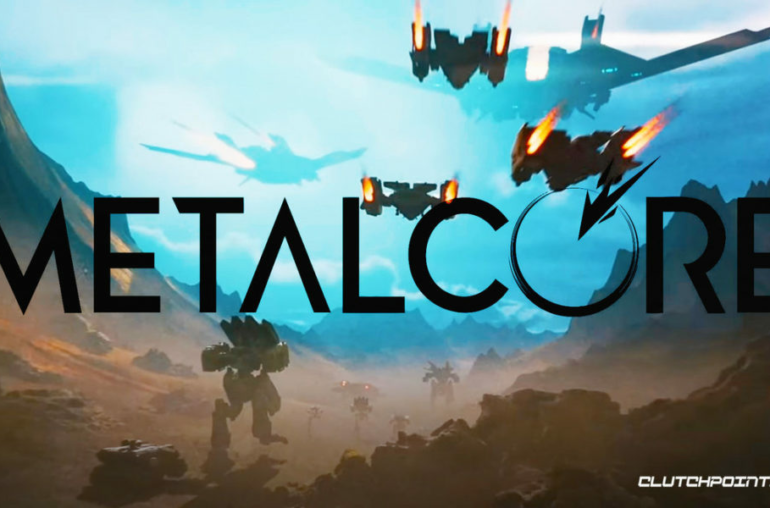The Forbes Advisor editorial team is independent and objective. To help support our reporting work, and to continue our ability to provide this content for free to our readers, we receive payment from the companies that advertise on the Forbes Advisor site. This comes from two main sources.
First, we provide paid placements to advertisers to present their offers. The payments we receive for those placements affects how and where advertisers’ offers appear on the site. This site does not include all companies or products available within the market.
Second, we also include links to advertisers’ offers in some of our articles. These “affiliate links” may generate income for our site when you click on them. The compensation we receive from advertisers does not influence the recommendations or advice our editorial team provides in our articles or otherwise impact any of the editorial content on Forbes Advisor.
While we work hard to provide accurate and up to date information that we think you will find relevant, Forbes Advisor does not and cannot guarantee that any information provided is complete and makes no representations or warranties in connection thereto, nor to the accuracy or applicability thereof.
The Forbes Advisor editorial team is independent and objective. To help support our reporting work, and to continue our ability to provide this content for free to our readers, we receive payment from the companies that advertise on the Forbes Advisor site. This comes from two main sources.
First, we provide paid placements to advertisers to present their offers. The payments we receive for those placements affects how and where advertisers’ offers appear on the site. This site does not include all companies or products available within the market.
Second, we also include links to advertisers’ offers in some of our articles. These “affiliate links” may generate income for our site when you click on them. The compensation we receive from advertisers does not influence the recommendations or advice our editorial team provides in our articles or otherwise impact any of the editorial content on Forbes Advisor.
While we work hard to provide accurate and up to date information that we think you will find relevant, Forbes Advisor does not and cannot guarantee that any information provided is complete and makes no representations or warranties in connection thereto, nor to the accuracy or applicability thereof.
Updated: Sep 29, 2022, 3:45pm
Edited By
Edited By
Non-fungible tokens (NFTs) have taken the crypto market by storm over recent years.
While crypto enthusiasts insist there are myriad possible use cases for NFTs, the most popular—and valuable—application of this unusual crypto technology has been works of art that exist solely on the blockchain.
By most metrics, Bored Ape Yacht Club (BAYC) is the most successful NFT art collection. BAYC’S current market capitalization is valued at around $US1.1 billion, according to CoinGecko.
In recent months, there have even been stories of Bored Apes being stolen by hackers, including a bizarre phishing scheme involving the actor and producer Seth Green.
“Well (friends), it happened to me. Got phished and had four NFTs stolen,” Green tweeted in May.
While stealing blockchain art monkeys might seem somewhat abstract, it’s easier to understand given the titanic valuations behind the Bored Apes. In April 2022, entry-level prices reached nearly $420,000—that’s expensive art, making them fat targets for heists.
So what’s the deal with these curiously named NFTs?
Here’s a guide to all things Bored Apes, including a look at its history, meteoric rise, recent controversies and stratospheric pricing.
The Bored Ape Yacht Club is an NFT collection created by Yuga Labs on the Ethereum (ETH) blockchain. Each individual NFT is referred to as an Ape.
These digital artworks portray, well, bored simians. They all share a common look and feel, yet each Ape features a unique combination of facial expressions, accessories and outfits, so no two are the same.
It’s this combination of features—or the relative rarity of each combo—that may be the very thing that underpins the popularity of the Bored Apes. In the BAYC community, “rarity” is a formal measure of the uniqueness of each Ape.
There are dedicated websites that score Apes for their rarity. According to Rarity Tools, Bored Ape No. 8135 recently held the highest “custom rarity score”. Notable features for Bored Ape No. 8135 include a dagger in its mouth, a “trippy captain’s hat”, and a silver stud earring.
Other than rarity, there’s nothing ostensibly unique about the artworks themselves—they’re just pictures of monkeys, after all. What separates BAYC from the crowd is that it has become a cultural phenomenon.
For the NFT cognoscenti, owning a Bored Ape means more than just possessing a digital cartoon monkey—it’s a ticket granting the holder access to an exclusive membership club with perks like merchandise, parties and ApeCoins (APE), among other things.
Created via an algorithm, there will only ever be 10,000 Bored Ape NFTs in circulation.
As noted above, each Ape is unique. While it may share a feature, or several features, with other Apes, no two are identical. This drives BAYC’s non-fungible nature, which is the key to NFT valuations.
Scarcity also means BAYC NFTs are highly illiquid. OpenSea, the biggest NFT marketplace, has previously taken the action of freezing the listing of certain Apes if they are reported as stolen.
This action is considered controversial in some quarters, as a central entity intervening goes against one of the core pillars of crypto: decentralisation. On the other hand, it helps prevent perpetrators from selling the stolen Apes for crypto they can withdraw.
Celebrities, influencers and regular folks own Bored Apes. Some BAYC owners use their Apes as their social media profile images.
Well-known celebrities love their Bored Apes; Madonna owns BAYC No. 4988, Justin Bieber has BAYC No. 3001 and Tom Brady owns BAYC No. 3667, to name just a few.
I finally entered the MetaVerse…,……….. My very own Ape! 🦧 Thanks @moonpay 🪄 We all need protection from Evil Eye. 🧿 pic.twitter.com/We5p9iy4hS
“The general public hears about a celebrity paying money for a BAYC NFT, which in turn creates validation and a perceived value in the project itself,” says Dave Broome, CEO of US-based Orange Comet, which has launched several NFT collections.
Bored Apes were first released in April 2021, with an original mint price of 0.08 ETH, equivalent to about $192 USD at the time.
Apes’ floor price, the price for the cheapest NFT within a collection, has fluctuated wildly.
It peaked in April 2022 at around $420,000 almost a year to the day when the collection was released. But the BAYC floor price has fallen amid the crypto downturn— now at 72 ETH, nearly $110,000. That’s a drop of more than 70% in five months.
For rarer Apes, the price has frequently been into the millions of dollars. For example, BAYC No. 5383 sold on Aug 18 for 777 ETH, roughly $1.4 million. The rare gold fur attribute primarily drives its high price.
The most expensive Ape ever sold also possesses gold fur, BAYC No. 8817, sold at Sotheby’s “Natively Digital 1.2: The Collectors” in October 2021 for $3.4 million.
#AuctionUpdate #BAYC #8817 sells for a RECORD $3,408,000 USD! This is the first time it has been made available since it was minted. Less than 1% of all Bored Apes have the gold fur trait. From the collection of @j1mmyeth #NativelyDigital pic.twitter.com/HfFTpEOIUh
It is also important to remember that BAYC and most of the other largest NFT collections are denominated in Ethereum, meaning not only is BAYC subject to the volatility of the floor price itself, but also the fluctuation of ETH’s price against US dollars and other fiat currencies.
Potentially causing further movement ahead is the danger of liquidation for several borrowers at BendDAO. This NFT lending platform allows BAYC NFTs to be put up as collateral on loans.
With a lot of Bored Apes pledged as collateral months ago when the floor price was significantly higher, loans could be liquidated if the market sees further downside.
If this scenario were to materialize, there could be implications for the NFT market and the influence of BAYC.
With a persistent turbulent macro environment, Ethereum and Bored Apes will remain highly volatile going forward. BAYC remains an extremely risky investment, with a significant potential for downside and upside.
Bored Apes have been the subject of several thefts. Many wonder how this is even possible, given these Apes don’t exist in the “real world” and are digital creations.
But if a hacker gains access to someone’s private key, they can transfer out any cryptocurrency or NFTs, including Apes. Incidents involving Bored Apes have gained extra attention given their high value compared with other NFTs collections.
Several phishing scams have targeted Bored Ape owners, using methods such as gaining access to the Bored Ape Discord server before sharing phishing links to try to make off with some stolen Apes.
Our Discord servers were briefly exploited today. The team caught and addressed it quickly. About 200 ETH worth of NFTs appear to have been impacted. We are still investigating, but if you were impacted, email us at discord@yugalabs.io.
Yuga Labs has continuously expanded the BAYC ecosystem, driving more demand for these digital creatures. This includes the launch of its sister collection, Mutant Ape Yacht Club (MAYC).
On Aug 28, 2021, 20,000 Mutant Apes were released, resembling mutated versions of their Bored Ape cousins. In its creation, each Bored Ape was exposed to a “vial of Mutant Serum.”
BAYC holders had an option to pair their unique NFT with the Mutant Serum, hence creating a Mutant Ape in addition to the Bored Ape they already held.
Half of MAYCs were created this way. The remainder were sold to the public via a Dutch auction, with $96 million in sales in less than one hour.
When I APE in I APE all the way in!! pic.twitter.com/3XB3Jo5Fb6
Mutant Apes are just another way that Yuga Labs has turned BAYC into a cultural juggernaut.
But with the pandemic-era bull market cooling drastically this year, Apes of all varieties have cratered in price, leaving even their famous celebrity owners holding the bag.
Note: When investing, it’s possible to lose some, and very occasionally all, of your money. Past performance is no prediction of future performance and this article is not intended as a recommendation of any particular asset class, investment strategy or product.
Bored Ape Yacht Club NFTs are some of the most popular and expensive digital art pieces in the crypto and blockchain industry, but why?
The answer lies largely in their rarity—there are only 10,000 available worldwide—but also because of the exclusive club perks such including private online spaces, unique merch and members-only events, as well as the ownership of the NFTs full commercial rights.
Ownership of full commercial rights is unlike other collections, as usually collectors and investors are prohibited from commercially marketing the NFTs they purchase, and are conditioned to terms of service.
As of August 2022, the Ethereum floor price of the Bored Ape Yacht Club NFT collection dropped to its lowest level since the start of the year amid a continued crypto market crash.
An NFT floor price is the lowest amount of money you would have to spend to buy an NFT from a collection. Currently, the BAYC floor price sits at 79.99 ETH, equating to around $107,000.
Arry Yu, chair of the Washington Technology Industry Association Cascadia Blockchain Council and managing director of Yellow Umbrella Ventures, says that just because you can buy NFTs, that doesn’t necessarily mean you should.
“NFTs are risky because their future is uncertain, and we don’t yet have a lot of history to judge their performance,” she notes.
“Since NFTs are so new, it may be worth investing small amounts to try it out for now.”


